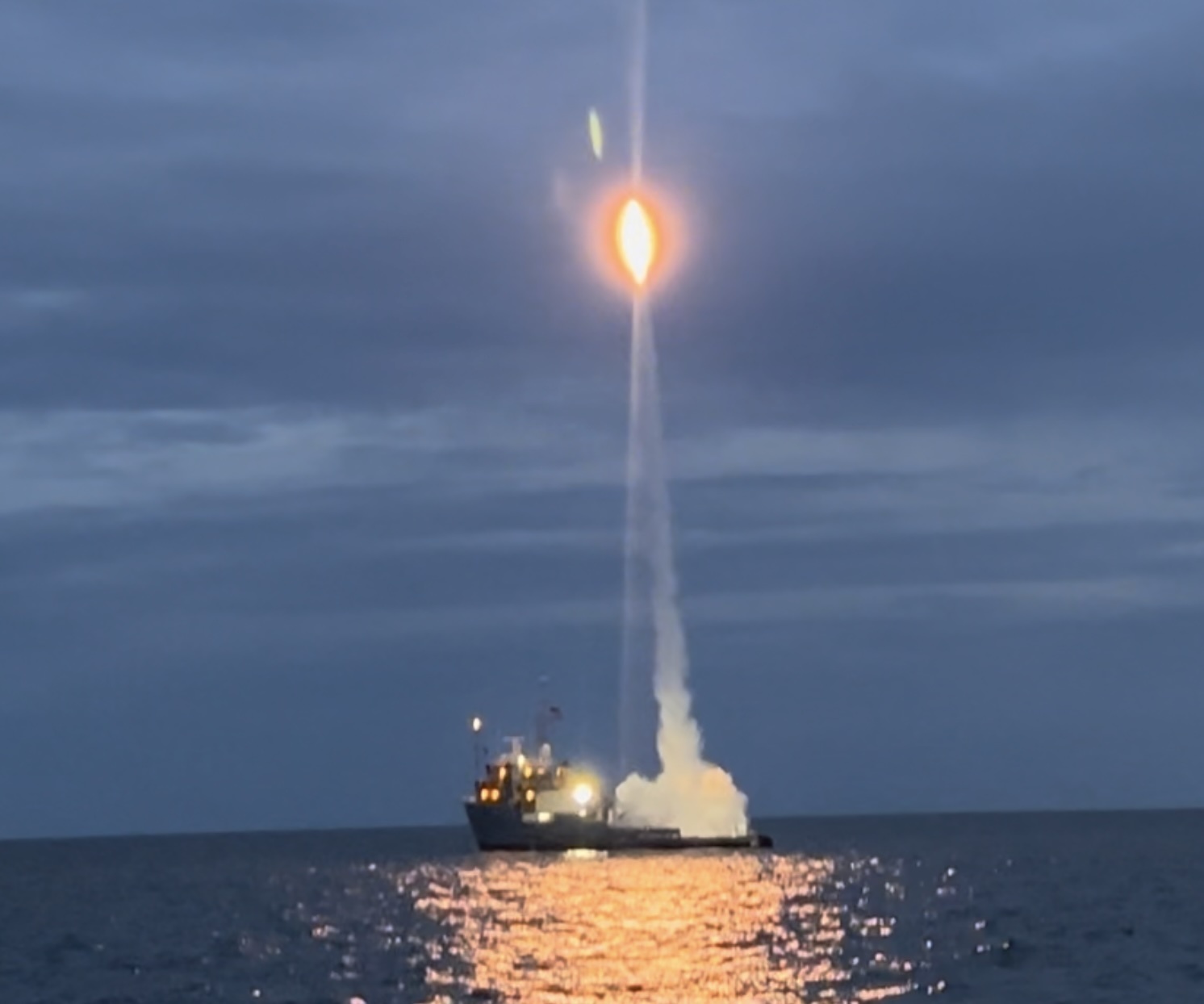4.09.2024
The solid propulsion test vehicle reached an altitude of 55,500 feet

Evolution Space on Aug. 31, 2024, successfully flew a sub-scale test rocket from a sea-based platform operated by The Spaceport Company. Credit: The Spaceport Company
WASHINGTON — Evolution Space, a Mojave, California-based startup, announced Sept. 3 it successfully flew a sub-scale test rocket from a sea-based platform operated by The Spaceport Company. The launch took place Aug. 31 over the Gulf of Mexico.
The solid propulsion test vehicle, designed as a sub-orbital, sub-hypersonic rocket, reached an altitude of 55,500 feet. A sub-scale test flight uses a smaller, scaled-down version of the final rocket design in order to gather data and validate design concepts ahead of full-scale development.
The Spaceport Company’s offshore launch vessel was funded by a $2.5 million contract from the Defense Innovation Unit, a U.S. Department of Defense organization that works to accelerate the adoption of commercial technology for national security purposes.
Evolution Space has signed an agreement to produce solid rocket motors at NASA’s Stennis Space Center. The company recently secured a U.S. Air Force research contract for the development of solid propulsion hypersonic vehicles.
This test marks the second collaboration between Evolution Space and The Spaceport Company. Last year the two companies launched four sounding rockets, with Evolution Space providing the propulsion systems.
“We share a mission with The Spaceport Company to provide new solutions to the Defense Department’s infrastructure challenges,” said Matthew Merighi, director of strategy at Evolution Space.
The experiment occurred approximately 30 miles south of Mississippi in the Gulf of Mexico. The test served to validate The Spaceport Company’s sea-based launch equipment and ground support equipment, said the company’s CEO and founder Tom Marotta.
“Emerging hypersonic technologies require additional and larger test ranges to accommodate higher cadence testing campaigns,” he said. “With this new commercial facility, we will alleviate the burdens on government ranges and enable at-sea test environments that existing land-based ranges are unable to provide.”
The company’s sea-based launch site can support rockets up to 1,000 lbs. in gross liftoff weight to altitudes above the Kármán line, said Marotta.
Quelle: SN
